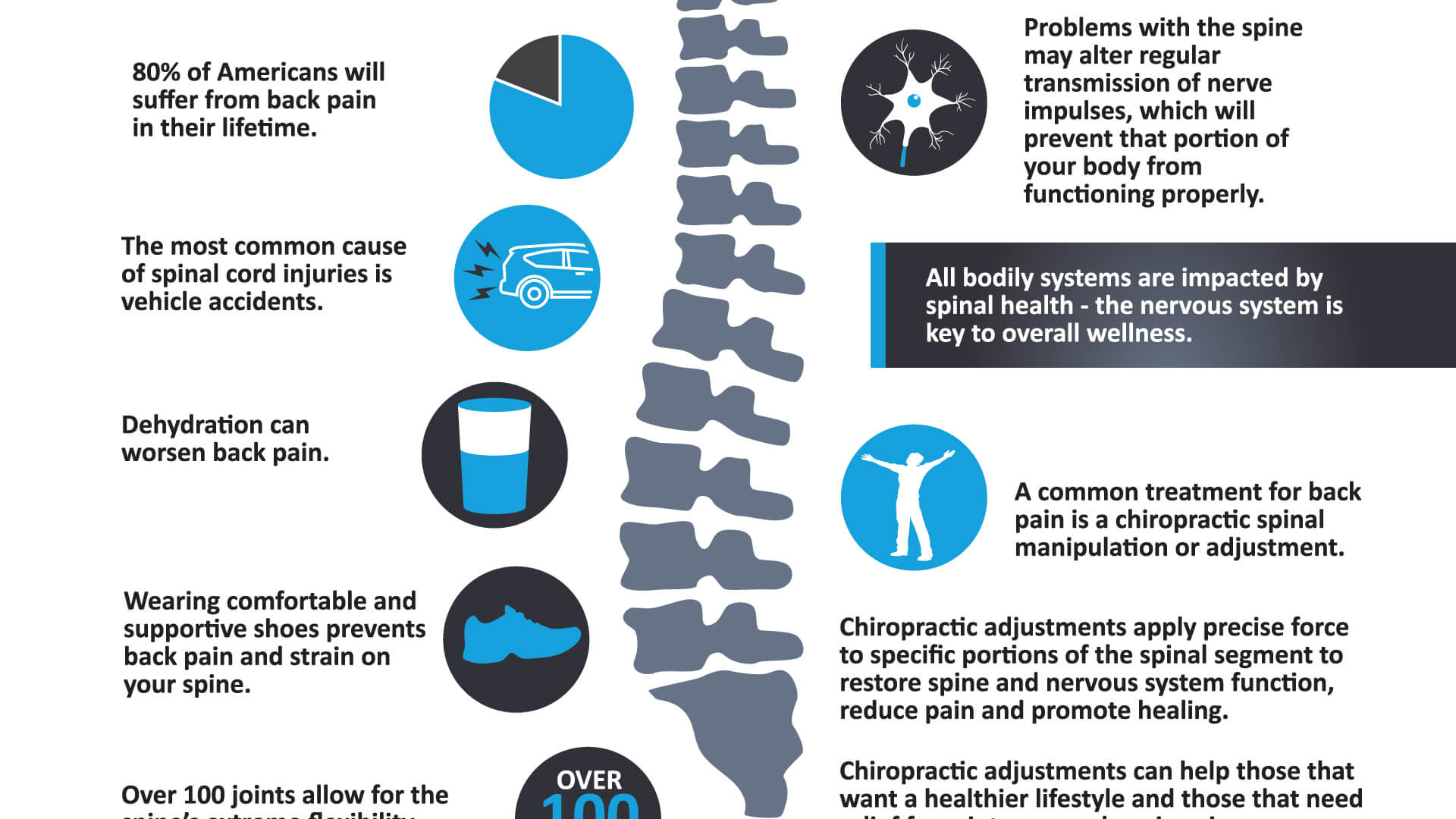The Top Daily Behavior That Contribute To Pain In The Back And How To Stay Clear Of Them
The Top Daily Behavior That Contribute To Pain In The Back And How To Stay Clear Of Them
Blog Article
Web Content Author-Snyder Baxter
Maintaining appropriate posture and avoiding typical pitfalls in daily activities can substantially affect your back health and wellness. From how you sit at your workdesk to just how you raise hefty objects, small changes can make a big difference. Imagine a day without the nagging back pain that impedes your every move; the solution could be less complex than you believe. By making a couple of tweaks to your everyday behaviors, you could be on your means to a pain-free existence.
Poor Stance and Sedentary Way Of Life
Poor posture and an inactive lifestyle are 2 major factors to back pain. When you slouch or hunch over while sitting or standing, you placed unneeded pressure on your back muscle mass and spinal column. This can cause muscle inequalities, stress, and ultimately, chronic neck and back pain. Additionally, sitting for extended periods without breaks or physical activity can weaken your back muscular tissues and lead to tightness and discomfort.
To battle poor position, make a mindful effort to rest and stand up straight with your shoulders back and straightened with your ears. Keep in mind to keep your feet level on the ground and prevent crossing your legs for extended periods.
Including https://www.verywellhealth.com/chiropractic-therapy-for-migraine-headache-4116849 extending and enhancing exercises right into your daily regimen can also help enhance your posture and relieve back pain associated with a less active way of life.
Incorrect Training Techniques
Inappropriate training strategies can considerably add to back pain and injuries. When you lift hefty objects, keep in mind to bend your knees and utilize your legs to lift, instead of counting on your back muscles. Stay clear of twisting your body while training and keep the object near to your body to minimize strain on your back. It's crucial to keep a straight back and avoid rounding your shoulders while raising to prevent unneeded pressure on your spine.
Always assess the weight of the things before lifting it. If it's too hefty, ask for help or use tools like a dolly or cart to transport it safely.
Keep in mind to take breaks throughout raising jobs to offer your back muscular tissues a possibility to relax and stop overexertion. By applying proper training techniques, you can prevent pain in the back and reduce the threat of injuries, guaranteeing your back stays healthy and balanced and solid for the long term.
Absence of Normal Workout and Stretching
A sedentary lifestyle without regular exercise and extending can considerably contribute to pain in the back and pain. When simply click the following internet site don't take part in exercise, your muscles end up being weak and stringent, leading to bad position and raised pressure on your back. Routine exercise helps enhance the muscular tissues that sustain your back, enhancing stability and decreasing the danger of pain in the back. Incorporating extending right into your regimen can likewise boost versatility, avoiding rigidity and pain in your back muscles.
To prevent pain in the back brought on by an absence of exercise and stretching, go for a minimum of 30 minutes of moderate exercise most days of the week. Consist of workouts that target your core muscle mass, as a solid core can help relieve pressure on your back.
Additionally, take breaks to stretch and move throughout the day, especially if you have a desk job. Basic stretches like touching your toes or doing shoulder rolls can assist alleviate tension and avoid back pain. Focusing on routine exercise and stretching can go a long way in keeping a healthy back and minimizing pain.
Conclusion
So, remember to sit up right, lift with your legs, and stay active to avoid pain in the back. By making basic changes to your daily habits, you can avoid the discomfort and restrictions that feature neck and back pain. Look after your spine and muscle mass by practicing good position, appropriate training techniques, and routine exercise. Your back will certainly thank you for it!
